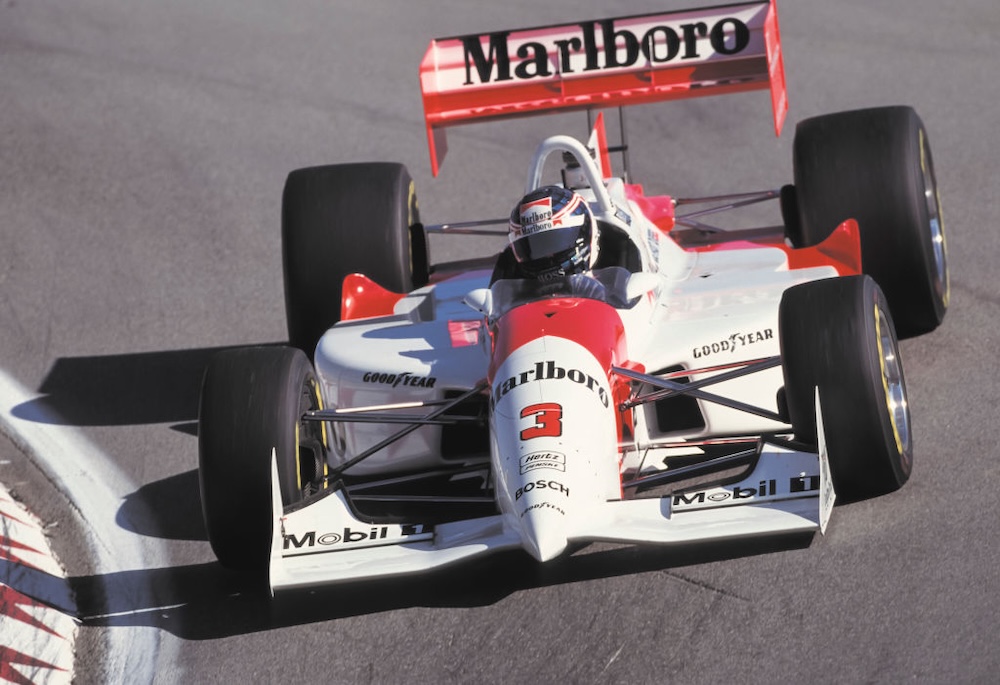It’s ‘Big Dave’ time for David Malukas at Team Penske. IndyCar’s No. 1 representative of Gen Z no longer drives for an underdog team; the ‘Lil’ Dave’ era is officially over.
With Malukas, it’s a roll of the dice from an organization that doesn’t like to gamble. It’s fond of sure things and odds tipped heavily in its favor, which makes this hiring unlike any other in decades for Roger Penske.
The team with 17 IndyCar championships, 20 Indianapolis 500 victories, 308 pole positions, and 246 IndyCar wins has gone all-in on a 23-year-old from Illinois with zero wins or poles to complement two of the series’ best drivers in Josef Newgarden and Scott McLaughlin, and that makes for a fascinating development to explore.
The last time anything remotely similar happened at Team Penske was in the previous century when Paul Tracy, the 1990 Indy Lights champion who crushed the field with 10 wins from 14 races, made a one-off IndyCar debut with Dale Coyne early in 1991 and sat on the sidelines until Penske took a flier on the Canadian with an extra entry to close the season.
It was a handful of races to finish 1991 followed by a more robust part-time deal in 1992, and by 1993, Tracy was elevated to season-long status for Penske. He’d only contested 15 IndyCar races before going full-time, and once he got the nod in ’93, Tracy won 31 percent of the races – five out of 16 – which matched the win tally of eventual champion Nigel Mansell.
Tracy was the clear No. 1 new talent of the era, an obvious star in the making to embrace as the ageing legends on Penske’s roster like Rick Mears and Emerson Fittipaldi were reaching the end of their open-wheel careers. Penske was lauded at the time for giving the rookie a chance, and while it came with an expensive learning curve, and no championships were produced across two stints with the team from 1991-’94 and 1996-‘97, Tracy’s 11 wins and 21 podiums more than validated Penske’s bold move to hire outside of the usual champions and Indy 500 winners.
In modern terms, this was Penske taking a Pato O’Ward, Colton Herta, or Kyle Kirkwood off the unemployment line and jumpstarting an IndyCar career to their mutual benefit.
With the exception of Tracy, and a few others Penske tried in 1999 when the team was at its lowest point, nothing about the acquisition of Malukas fits Penske’s time-honored practice of recruiting IndyCar race winners or seasoned champions from other disciplines to lead the program. McLaughlin was new to IndyCar, but he wasn’t new to Penske, not after reeling off three Australian Supercars titles for DJR Team Penske.
Malukas isn’t an O’Ward type, or a Tracy, or a McLaughlin. He doesn’t fit or conform to any time-honored models Penske has used to select IndyCar drivers. But that doesn’t mean he can’t or won’t succeed for Penske. He’s just a non-traditional selection at a team that embodies tradition.
Admittedly, that’s part of the charm with this signing. For the Malukas we’ve known, he’s an unserious character out of the car who’s welded to social media before transforming into someone who’s exceptionally fast in qualifying and isn’t afraid to bang wheels and race side-by-side with the best in IndyCar.
The bones of an exceptional talent reside within a driver who’s has become a fan favorite and an occasional thorn in the sides of his rivals. But the latter part – the occasional part – won’t be accepted at his new team.

Malukas has some big wheel tracks to follow in taking over the No.12, and Penske will be looking for him to make his presence felt early. Joe Skibinski/IMS
Will all that Lil’ Dave has been – and whatever he develops into as ‘Big Dave’ – be enough to deliver for Penske? And what kind of expectations will he face as the pilot of the No. 12 Chevy?
Win now. No training wheels. No gradual ramping up. Victory at St. Petersburg.
Penske’s reached its status as the best IndyCar team of all time by fielding drivers who are permanent threats, and for those who fall short of that mission, their names get peeled off the cockpit in short order. I can’t recall a single Team Penske driver signing that went into the relationship with lowered expectations. The only contemporary exception was with McLaughlin, and that was simply a case of giving him the time to learn a brand-new form of racing in an unfamiliar car at unfamiliar tracks before it was reasonable to ask for wins.
McLaughlin stood on the podium in his first oval race, and in his second season, won three times, earned two poles, and placed fourth in the championship. Penske hired McLaughlin because he saw something exceptional in Supercars to deploy in IndyCar. With Malukas, there are no such excuses to offer. He’s driven for three teams across four seasons, made 61 starts and reached the podium three times.
Penske isn’t looking to 2026 as an introductory year – a yearlong grace period – for Malukas, who turns 24 on September 27. Big Dave is expected to arrive at the first race to deliver big results in the No. 12 Chevy.
Yes, he’s replacing a living legend in Will Power, in the Verizon car Power made famous with two championships and a trip to victory lane at the Indy 500. But that’s part of the challenge as well. Malukas needs to become his own man in an entry everyone associates with its former driver.
